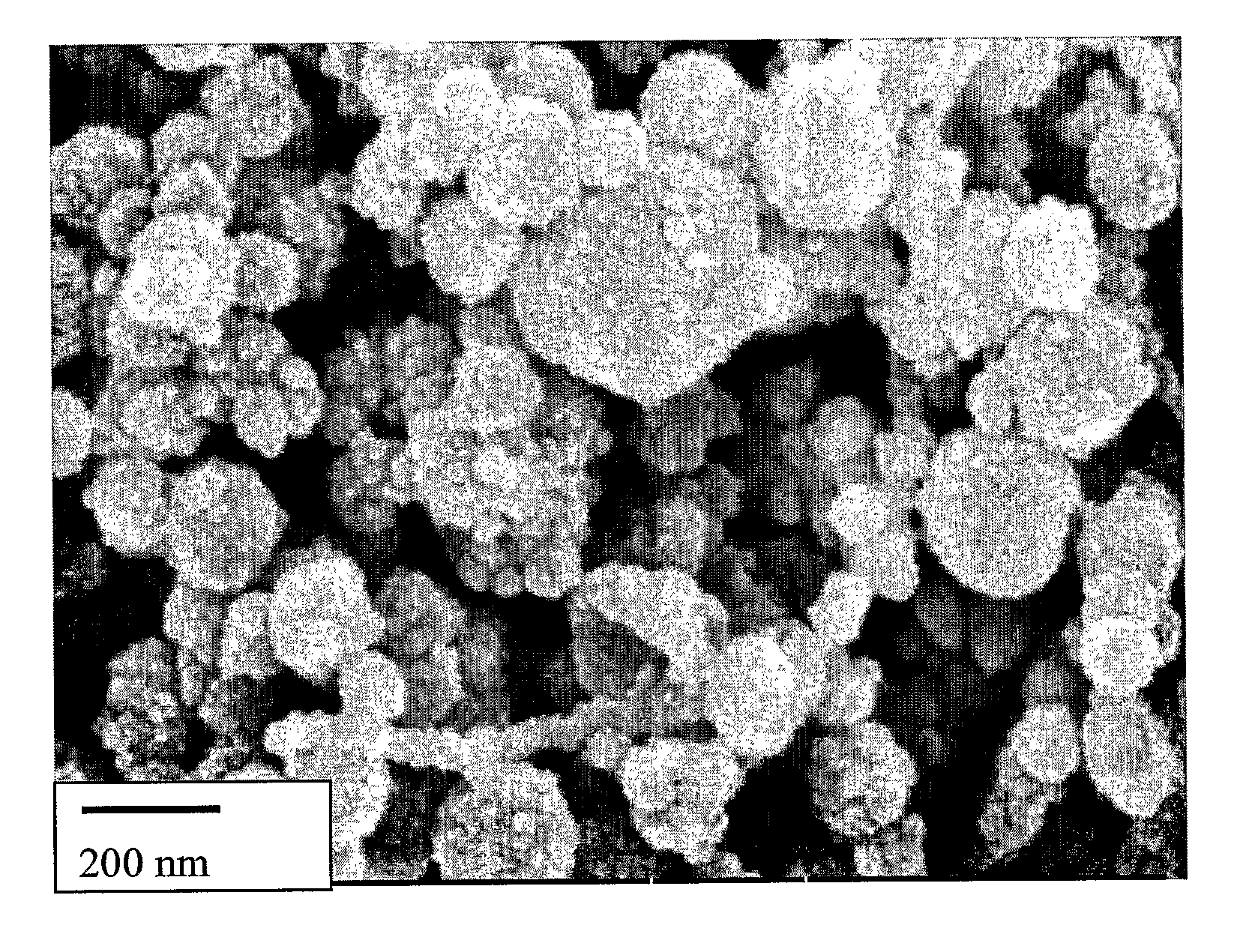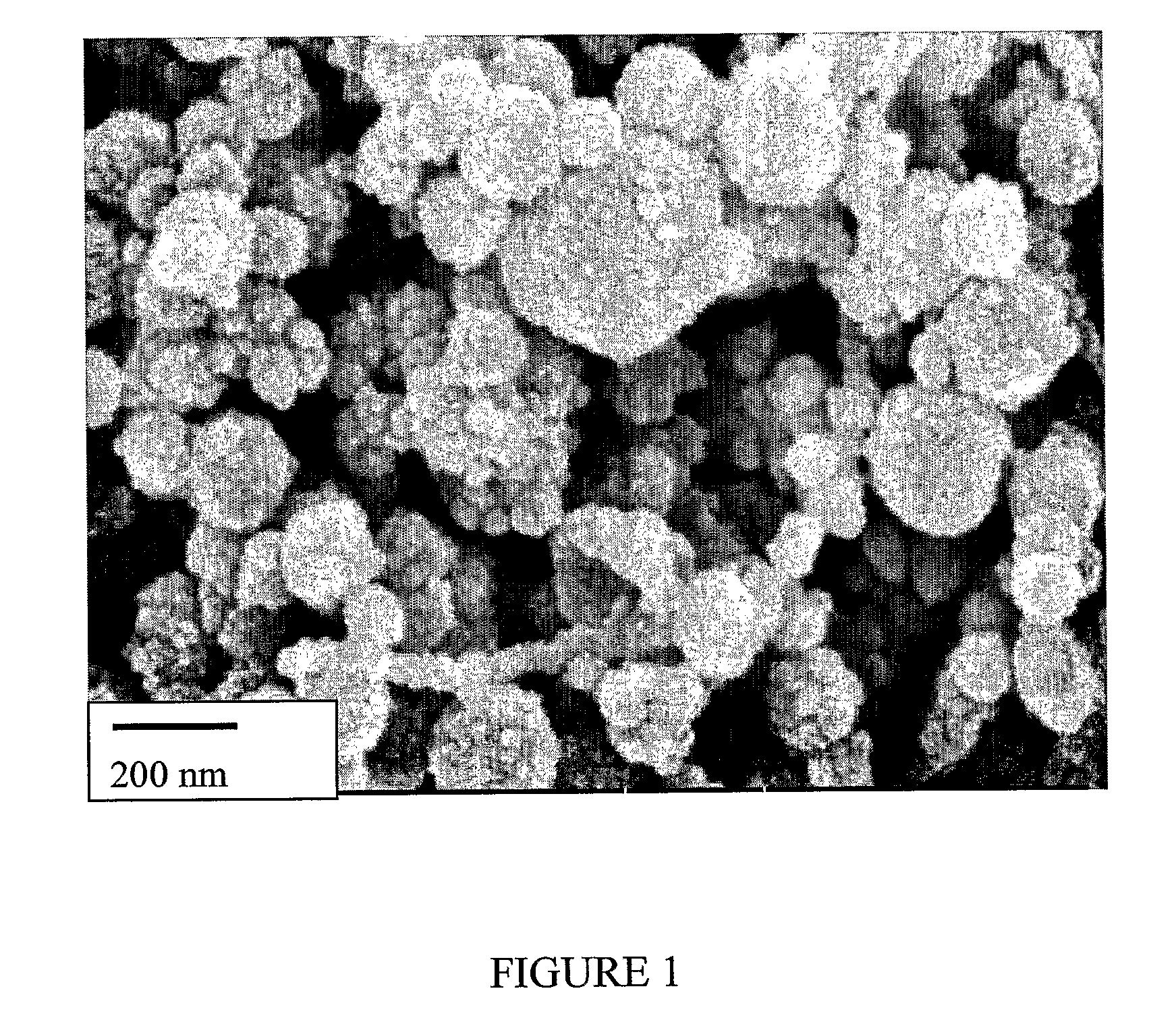Pesticide nanoparticles obtained from microemulsions and nanoemulsions
a technology of nanoemulsions and pesticides, which is applied in the direction of biocide, heterocyclic compound active ingredients, animal husbandry, etc., can solve the problems of handling toxic and/or irritant levels of pesticides, unsustainable environmental protection, and potential health and safety risks of handlers, so as to improve the stability of nanoparticles
- Summary
- Abstract
- Description
- Claims
- Application Information
AI Technical Summary
Benefits of technology
Problems solved by technology
Method used
Image
Examples
example 1
[0120]An oil-in-water microemulsion composition was prepared having the indicated percent weight proportions of the following materials: sodium dodecyl sulfate (4%), linear alkyl benzene sulphonate (1.5%), iso-butyl acetate (46%), 2-propanol (22.5%), water (22.5%), novaluron (Rimon®) (2.5%) and Silwet® L-77 (organanosilicone surfactant comprising a blend of polyalkyleneoxide modified heptamethyltrisiloxane and allyloxypolyethylene glycol methyl ether; 1%).
[0121]The microemulsion was prepared by first dissolving the required quantity of novaluron in iso-butyl acetate. Next, surfactants and 2-propanol were mixed with water. Aqueous and organic phases were mixed together and vortexed until a transparent microemulsion was formed. Finally, Silwet® L-77 was added and the final microemulsion remained transparent.
[0122]The microemulsion was spray dried in a laboratory spray drier. The resulting powder could be stored for months in a sealed vial. The powder was composed of nanoparticles 120 ...
example 2
[0123]An oil-in-water microemulsion composition was prepared having the indicated percent weight proportions of the following materials: sodium dodecyl sulfate (6.2%), linear alkyl benzene sulphonate (2.8%), iso-butyl acetate (18.9%), 1-propanol (31.3%), water (39.5%), novaluron (1%), ethyl cellulose (0.1%) and Morwet® (sodium n-butyl naphthalene sulfonate; 0.2%).
[0124]The microemulsion was prepared by first dissolving the required quantity of novaluron and ethyl cellulose in iso-butyl acetate. Next, surfactants and 1-propanol were mixed with water. Aqueous and organic phase were mixed together and vortexed until a transparent microemulsion was formed. Finally, Morwet® was added and the final microemulsion remained transparent.
[0125]The microemulsion was lyophilized and the resulting powder could be stored for months in a sealed vial. The powder was composed of nanoparticles 210 nm in diameter, and was easily redispersible in water up to 1% according to weight.
example 3
Nanoparticles of Novaluron Prepared Using Lyophilization and Homogenization
[0126]Novaluron (1 g) was dissolved in 19 g of a solution of iso-butyl acetate solution containing ethyl cellulose (10%) to form an organic phase (20 g). Cetyl alcohol was also added. Polyvinyl alcohol (PVA; 2 g) was dissolved in water (78 g). The above ingredients was made into a crude emulsion by treatment with an Ultra Turrax® T 25 for 5 min at 11,000 rpm. The crude emulsion was homogenized at 20,000 psi using a micro fluidizer for two minutes to form a fine dispersion. The homogenized droplets (nanometric in size), were quickly evaporated under vacuum (1 mm Hg at 50 C°). A solution of Morwet®, %) and mannitol (1 / 1 wt / wt) was added to the dispersion followed by quick freezing using liquid nitrogen and overnight lyophilization. The resulting fluffy powder contained novaluron up to 45% according to weight, and was easily dispersible in water, without any requirement for a means of dispersal such as stirring ...
PUM
| Property | Measurement | Unit |
|---|---|---|
| Percent by mass | aaaaa | aaaaa |
| Percent by mass | aaaaa | aaaaa |
| Percent by mass | aaaaa | aaaaa |
Abstract
Description
Claims
Application Information
 Login to View More
Login to View More - R&D
- Intellectual Property
- Life Sciences
- Materials
- Tech Scout
- Unparalleled Data Quality
- Higher Quality Content
- 60% Fewer Hallucinations
Browse by: Latest US Patents, China's latest patents, Technical Efficacy Thesaurus, Application Domain, Technology Topic, Popular Technical Reports.
© 2025 PatSnap. All rights reserved.Legal|Privacy policy|Modern Slavery Act Transparency Statement|Sitemap|About US| Contact US: help@patsnap.com



